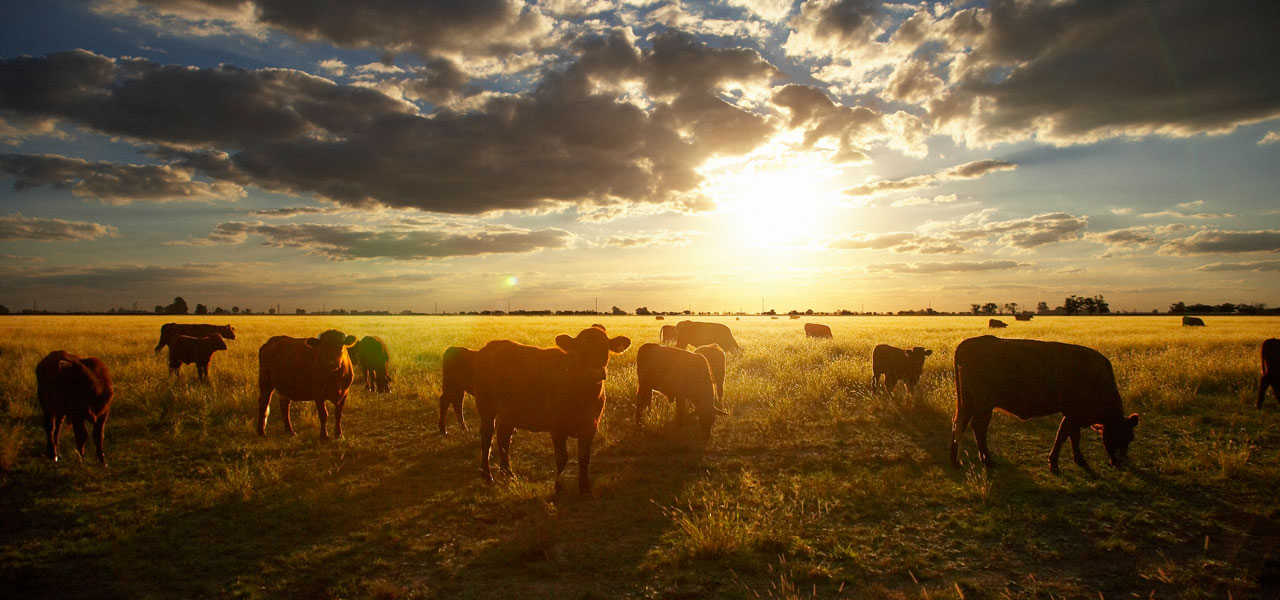A highly technical, scientific and competitive agricultural environment is causing an increased number of farmers to become more aware of the need to protect their businesses against risk. This is especially true in the livestock sector, where farmers can suffer great losses because of fire, lighting, poisoning or severe weather. It’s therefore important to advise clients on the differences in the insurance of stud animals versus commercial herds, and the risks to watch out for.
A growing number of feedlots brings new types of risks
An increasing number of farmers are setting up feedlots to improve their cash flow and turnover. Since maize prices are very low, farmers try to extract more value from their maize crop by converting it into beef in a feedlot. However, this introduces new types of risks to the farming enterprise such as a greater risk of disease (if buying in animals from auctions for commercial slaughter purposes).
Fortunately, farmers are not only more aware of the types of risks that they face, but also more inclined to take out additional insurance. Santam has noticed an increase in the uptake of general agricultural and livestock insurance among small commercial livestock producers. Farmers seem to have realised that if they don’t have the cash flow to absorb losses, insurance can be the difference between losing a business and picking up the pieces and starting again.
However, livestock farmers must be mindful that quantifying their risks should not follow a one-size-fits-all approach. These risk factors must be assessed individually:
- A farm’s setup
- The type of livestock kept, and
- Area-specific disease risk
A tailormade livestock insurance product
Santam Agriculture’s livestock insurance product offering has been developed to offer the livestock farmer tailor-made insurance solutions and keep up with new trends in agricultural insurance.
Our product is not a stand-alone policy, but can be taken out as part of a farmer’s asset insurance portfolio. Under the Livestock policy, a client has insurance options that include:
- Cover against death of the animals due to fire and lighting,
- Attacks by wild animals,
- Rain, freezing or cold conditions, or
- Plant poisoning.
The client can also extend their policy by including Fire on Veld, Liability and Transit cover:
- Transit cover protects a farmer transporting animals to and from the market or auction.
- Liability cover is essential to protect the farmer against third-party damage, for example if animals break out of camps and damage a neighbouring farmer’s crop or run into the road causing a car accident resulting in injury or death.
Farmers should also decide whether they require insurance for stud or commercial animals. It’s best to advise clients to tailor their insurance policy based on risks specific to their area. For example, in certain areas, lightning is a big risk and farmers would then take out cover for this.
How insurance differs for stud animals and commercial herds
The insurance product for stud animals and commercial herds differs in some respects. If a farmer wants to take out insurance for stud animals, they must be registered with the relevant breeders’ association. Animals from a commercial herd aren’t necessarily purebred and are mainly reared for the commercial market.
Stud animals are insured on an individual basis. Comprehensive cover can be taken out, but it is up to the farmer to include the perils he deems most important. The policy can insure against death of animals caused by an accident, illness or disease (such as heartwater fever or gall sickness). Such insurance would include cover against fire, lightning, explosions and attacks on livestock by wild dogs or other wild animals.
On the other hand, individual animals in a commercial herd cannot be insured. The entire herd can be insured for fire, lightning, explosions and some additional extensions. The type of comprehensive cover available for studs also doesn't apply for the commercial herd. The reason is that stud animals can be individually identified as they are registered, but this is not the case with commercial animals.
Help clients get the right insurance in a new agriculture world
As you know, Santam Agriculture’s dynamic team of expert underwriters is highly experienced in anticipating the risks involved in livestock farming. Therefore, our insurance product for this sector has grown over the years and now includes a sizeable number of clients in South Africa and Namibia.
If you would like more information about agriculture insurance, speak to your relationship manager or contact Santam. For advice tailored to intermediaries, visit our blog for more useful articles, such as how to help farmers get sufficient legal liability cover.
